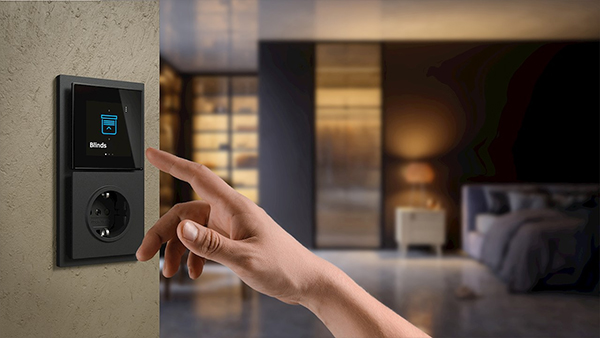
Kevin Lenton explains how KNX technology solutions can address the needs of an ageing population.
As with many developed countries, the UK is on the brink of a demographic shift. The United Nations forecasts that by 2043, 24% of the UK population will be 65 or older, signalling an urgent need for housing that caters to the unique needs of an aging demographic.
Meanwhile, the English Housing Survey for 2021 revealed that 1.1 million older adults live in poor housing conditions, facing energy inefficiency, dampness, and health risks. As the new government looks to build 1.5 million homes over the next five years, the future must not be uncertain for these more vulnerable residents.

With ABB as a technology partner, architects Cartwright Pickard and research institute The Helen Hamlyn Centre for Design have developed a new study, ‘Age-Inclusive Design Principles: Shaping a sense of belonging in later life‘. It shows that KNX technology can play a crucial role in enhancing living standards for older adults through smart home solutions such as automated lighting, climate control, and security. In order to guide the design and development of future later living housing, the study outlines 18 key principles:
- The role of ethnographic study & market research.
- Connected locations close to local amenities.
- Microclimate as an integral part of the design.
- Optimise orientation and thermal comfort.
- Enhance wellbeing by supporting natural circadian cycles.
- A room with a view.
- Intergenerational developments with choice of tenure.
- Add a diverse mix of uses and amenity.
- Integrate nature and biodiversity inside and out.
- Celebrate the building entrance.
- Design fully accessible homes with additional space.
- Social use of the circulation spaces.
- Design for wayfinding and perception of space.
- Avoid institutionalisation by design.
- Support sensory perception.
- Incorporate smart technology.
- Embrace modularity through modern methods of construction.
- A mix of tenures can help create a sense of community and reduce development risk.
Incorporating smart technology
One of the design principles of the study is ‘Incorporate smart technology’. For instance, actuators to open doors can significantly enhance a resident’s independence, whilst wall-mounted controllers enable control of electrical systems, lighting, and appliances. Residents could also add features such as door control, touchscreens, or adjustable kitchen worktops.
A KNX system such as this could comprise sensors, smart switches, sockets, and actuators for motorised curtains and window openers, all connected through structured wiring that combines power with a bus line for digital communication. This allows residents to easily add new assisted living tools to the KNX system, particularly with adaptable digital protocols such as OpenAPI and Matter.

Voice control systems also make tasks easier for older adults. For instance, the ABB i-bus KNX system, compatible with Apple, Amazon, and Google smart speakers, allows voice control through a software update. This flexibility ensures that as residents’ needs evolve, their homes can adapt to provide ongoing support, thereby enhancing living conditions.
Safety and energy efficiency
Rising utility bills are a major concern for older adults, making energy efficiency a critical concern. One effective solution involves passive infrared (PIR) sensors, a technology that detects room occupancy and automatically turns off heating and lighting when the room is empty, thus saving energy. For added security, these sensors can notify a concierge or care team if they detect that the apartment is empty when a resident is supposed to be home.
An integrated approach adds an active element to enhance energy efficiency. By preventing simultaneous operation of heating and cooling systems, it avoids wasteful energy consumption. The system also shuts off heating or cooling when a window is open, further conserving resources.
Beyond energy savings, technology can significantly reduce building service costs. Emergency lighting systems, for example, can be automated to self-test and alert when maintenance is required. This not only ensures compliance with safety regulations but also eliminates the need for labour-intensive inspections and testing.
Best practices advocate for a combination of these automated technologies. Residents benefit from lower utility costs and enhanced safety, whilst facility managers enjoy streamlined maintenance and regulatory compliance.
Future-proof solutions
The above examples show how thoughtful application of technology can address rising living costs and improve quality of life for older adults. Indeed if companies embrace the above 18 principles holistically, they can ensure that living spaces are not only pleasant, but comfortable, safe and energy-efficient.
Future developments are expected to feature more advanced smart technologies, greater integration of green spaces, and an increased focus on sustainability. This approach will ensure that older generations enjoy healthier, happier, and longer lives. This comprehensive strategy is essential for continued progress in community planning and development.
Kevin Lenton is the UK Product Marketing Director for ABB Smart Buildings.












